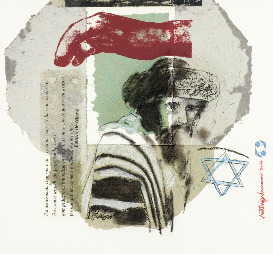Take My Works on behalf of your people: Sacrifice at the Sight of Judaism According to Borges
DOI:
https://doi.org/10.17851/1982-3053.12.23.32-51Keywords:
Reformulation, Intertextuality, ExegesisAbstract
In the following work we will see how Borges revisits the historical role that the Jewish community adjudges itself as the Chosen People to configure many of its plots and main characters. The bloody offer becomes an interest to the author not only for its atavic and barbaric disposition but also for its mystical and ritualistic nature: Sacrifice allows, both for the tribute and for those who offer it, to strength and rekindle the ties with the Divinity.
Downloads
References
AGUS, Aharón. The Binding of Isaac & Messiah. Law, Martyrdom and Deliverance in Early Rabbinic Religiosity. New York: SUNY Press, 1988.
ALLPORT, Gordon W. La naturaleza del prejuicio. Trad. Ricardo Malfé. Buenos Aires: EUdeBA, 1977.
BARTH, Frederik. Los grupos étnicos y sus fronteras. Trad. Sergio Lugo Rendón. México D. F.: FCE, 1976.
BANTON, Michael. Modelling ethnic and national relations. Ethnic and Racial Studies 17.1, p. 1-19, 1994.
BORGES, Jorge Luis. Obras Completas. 1923-1972. Buenos Aires: Emecé, 1984.
BORGES, Jorge Luis. Ficciones. Buenos Aires: Emecé, 1999.
BORGES, Jorge Luis. El Aleph. Buenos Aires: Emecé, 2005.
BORGES, Jorge Luis. El libro de arena. Buenos Aires: Alianza Editorial, 2008.
BOYER, Alain; HAYOUN, Maurice Ruben. La historiografía judía. Trad. Paula López Caballero. México D. F.: Fondo de Cultura Económca, 2008.
BROW, James. Notes on Community, Hegemony and uses of the Past. Antropological Quarterly 63.1, p. 1-7, 1990.
COLLINS, John J. Between Athens and Jerusalem. Jewish identity in the Hellenistic Diaspora. Livonia: W. B. Eerdman's Publishing Co, 2000.
COMAROFF, John L.; COMAROFF, Jean. Ethnicity Inc. Chicago: The University of Chicago Press, 2009.
ECO, Umberto. Construir al enemigo y otros escritos. Trad. Helena Lozano Miralles. Buenos Aires: Sudamericana, 2013.
ELIADE, Mircea. Mito y realidad. Trad. Luis Gil. Barcelona: Labor, 1992.
FARMER, William Reuben. Maccabees, Zealots and Josephus. An inquiry into Jewish Nationalism in the Greco-Roman Period. New York: Columbia University Press, 1958.
FRENKEL, Diana Lea. El martirio en la Septuaginta: II y IV Macabeos, Anales de Filología Clásica 24, p. 59-91, 2011a.
FRENKEL, Diana Lea. La institución de la monarquía en el relato bíblico”. Stylos 20, p. 7-34, 2011b.
GRABBE, Lester. L. An Introduction to Second Temple Judaism. London: T&T Clark, 2010.
LAMM, Norman; BEN SASSON, Haim Hillel. Kiddush haShem and Hillul haShem. En: BEREMBAUM, M. & SKOLNIK, F. Encyclopaedia Judaica. V. 12. Detroit, p. 139-145, 2009. Disponible en: http://www.jewishvirtuallibrary.org/jsource/ judaica/ejud_0002_0012_0_11109.html. Acceso en: 11 set. 2012.
LEFERE, Robin. Borges y los poderes de la literatura. Bern: Long, 1998.
MALEŠEVIĆ, Siniša. The Sociology of Ethnicity. London: Sage, 2004.
MOORE, Stephen D.; Anderson, Janice Capel. Taking it like a man: Masculinity in 4 Maccabees. Journal of Biblical Literature 126/1, p. 99-127, 1998.
PIÑERO, Antonio. Literatura judía de época helenística en lengua griega. Madrid: Síntesis, 2007.
RAHLFS, Alfred (Ed.). Septuaginta, id est Vetus Testamentum graecae iuxta LXX interpretes v. 1-2 [1935]. Stuttgart: Württembergische Bibelanstalt, 1971.
RIVERA, Jorge B. Los juegos de un tímido: Borges en el suplemento de Crítica. Crisis, n. 4, mayo-junio, p. 34-35, 1976.
SACCHI, Paolo. Historia del judaísmo en la época del segundo templo. Trad. Carlos Castillo Mattasoglio y Adela Sánchez Rojas. Madrid: Trotta, 2004.
SAULNIER, Christiane. La crisis macabea. Trad. Nicolás Darrical. Estella: Verbo Divino, 1983.
SAYAR, Roberto Jesús. He dicho: pueblo salvado. Esquemas narrativos y jurisprudencia en IV Macabeos en Neyra. En: NEYRA, Andrea Vanina; PÉGOLO, Liliana (Coord.) Un milenio de contar historias II. Los conceptos de ficcionalización y narración de la Antigüedad al Medioevo. Buenos Aires: Editorial de la Facultad de Filosofía y Letras, UBA [En prensa], 2018.
SAYAR, Roberto Jesús. Realmente en ti está Dios escondido (Is. 45.15). Historicidad y valor del testimonio en IV Macabeos [en línea]. Congreso Internacional de Literatura, Estética y Teología “El amado en el amante: figuras, textos y estilos del amor hecho historia”, 17-19 mayo 2016. Universidad Católica Argentina. FFyL. FT; ALALiTe, Buenos Aires. Disponible en: . Acesso en: 10 nov. 2018.
SAYAR, Roberto Jesús. Te voy a poner como una luz para el mundo (Is. 49.6.4). La figura de Eleazar como ejemplo y paradigma del éthnos hebreo en IV Macabeos. Anales de Filología Clásica 27, p. 99-114, 2014.
SCHIFFMAN, Lawrence H. The early history of public reading of the Torah. En: FINE, S. (Ed.). Jews, Chistians and Polytheists in the Ancient Synagogue. London/New York: Routledge, 2005. p. 38-49.
SHEPKARU, Shmuel. From after Death to Afterlife: Martyrdom and its recompense, Association for Jewish Studies Review 24/1, p. 1-44, 1999.
SOSNOWSKI, Saúl. Borges y la cábala. La búsqueda del verbo. Buenos Aires: Hispamérica, 1976.
VAN HENTEN, Jan Willem; AVEMARIE, Fiedrich. Martyrdom and Noble Death. Selected Texts from Graeco-Roman, Jewish and Christian Antiquity. London/New York: Routledge, 2002.
VAN HENTEN, Jan Willem. Judith as Alternative Leader: A rereading of Judith 7-13. En: BRENNER, A. (Ed.). A Feminist Companion to Esther, Judith and Susanna. Sheffield, 1995. p. 224-252.
Downloads
Published
How to Cite
Issue
Section
License
Os direitos autorais pertencem exclusivamente aos autores. Os direitos de licenciamento utilizados pelo periódico é a licença Creative Commons Attribution 4.0 (CC BY 4.0): são permitidos o compartilhamento (cópia e distribuição do material em qualquer meio ou formato) e adaptação (remix, transformação e criação de material a partir do conteúdo assim licenciado para quaisquer fins, inclusive comerciais.






